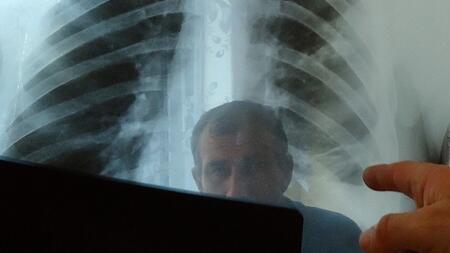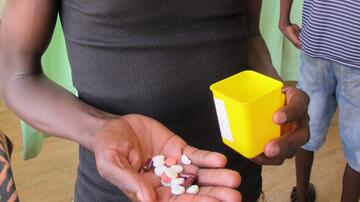Globally unique: Correct diagnosis of pulmonary tuberculosis in only three days
A new and rapid method for diagnosing pulmonary tuberculosis has been successfully developed at the Research Center Borstel. This innovative method constitutes an important building block for optimal diagnostics and could lead to improved tuberculosis treatment in future. The results have been published in the renowned European Respiratory Journal.
Up until a few years ago, confirming suspected pulmonary tuberculosis was only possible by means of lengthy procedures, which often necessitated long inpatient stays for healthy people or resulted in a delayed start of treatment for ill people. The gold standard for confirming pulmonary tuberculosis is to culture tuberculosis bacteria in appropriate media, which can take up to eight weeks. Now, one way of detecting tuberculosis genomes early is by means of an automated method called Xpert. With this method, tuberculosis bacteria in sputum can be detected within two hours. However, the method’s reliability depends on the number of bacteria present in the sputum.
At the Leibniz Lungenzentrum of the Research Center Borstel, a member establishment of the German Center for Infection Research (DZIF), a method has been developed that is able to detect active pulmonary tuberculosis even when there are insufficient tuberculosis genomes present in the sputum. This is done by determining specific immune cells which are specialised in defending the body against tuberculosis. These immune cells are found directly in the respiratory tract and can be obtained by means of bronchoscopy. “In combining the two procedures, over 98% of pulmonary tuberculosis patients can be identified within a matter of three days,” explains Dr Barbara Kalsdorf, who is a senior physician at the hospital and head of the study. “If both tests are negative, the risk of having contracted tuberculosis is extremely low.”
These results bridge an important gap in tuberculosis diagnostics. They enable rapid initiation of treatment for ill people and avoid unnecessary treatment of healthy people. Currently, this method is only being applied regularly in Borstel as a prerequisite is performing bronchoscopy with subsequent characterisation of the tuberculosis-specific immune cells. For this reason, the method still needs to be developed further so that it can be used routinely in countries that have a high prevalence of tuberculosis.




